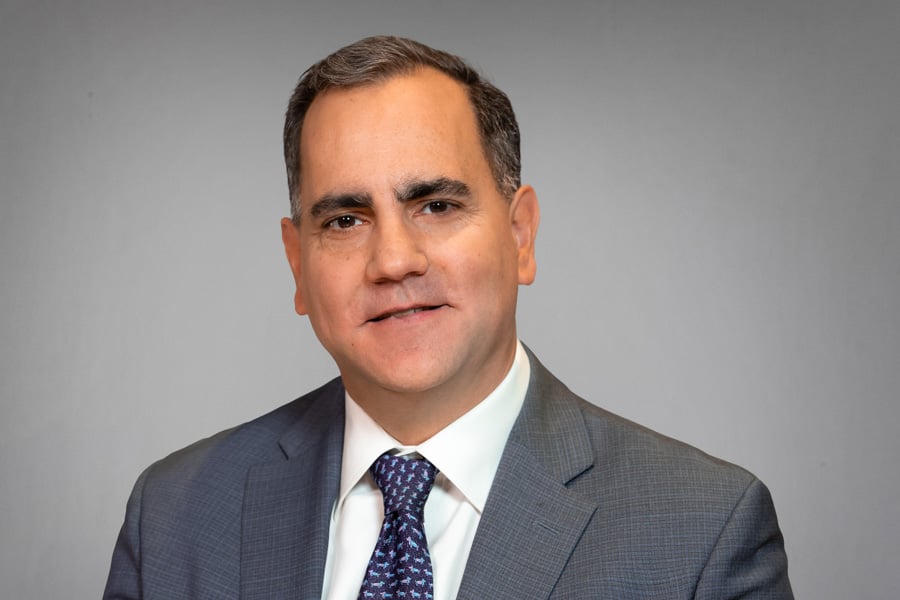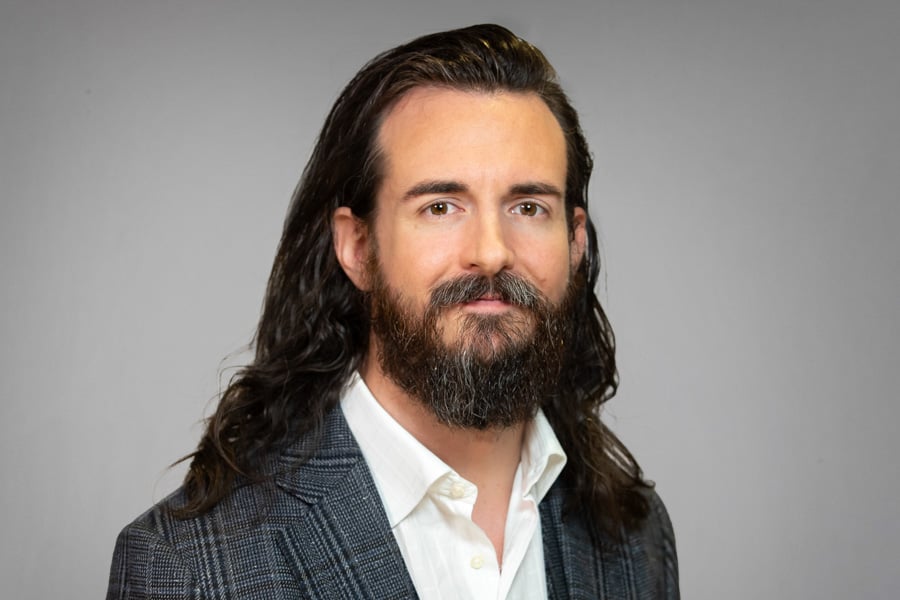The HEAL Trailblazer Award recognizes HEAL-funded researchers in the early or middle stages of their careers who are expanding research into addressing the pain and opioid crises in new directions. The 2024 awardees profiled below demonstrate the ability to develop or apply novel techniques, models, or methodologies to HEAL research.

Hernan Bazan, M.D., FACS, South Rampart Pharma, Inc.
There is a significant clinical and societal need for safer and non-addictive pain relief in outpatient and inpatient post-operative settings. In 2016, Bazan founded South Rampart Pharma, Inc., to address this critical unmet need and develop safer, non-opioid therapies for acute and chronic pain.
How does your work take pain or substance use disorder research in new directions?
Over 51 million Americans and one-fifth of the global population are affected by chronic pain and face limited treatment options. There is an urgent need for safe, non-addictive, effective pain treatments. Our project works to address this need by developing a novel non-opioid drug candidate, SRP-001.
Why is collaboration between scientists and businesspeople important for developing solutions to problems and improving lives?
Collaboration between scientists and businesspeople plays a critical role in transforming research into practical solutions that can significantly improve lives and tackle complex issues like the opioid, overdose, and pain crises. The synergy between scientific innovation and business acumen ensures that research outcomes do not remain confined to laboratories but evolve into viable products that meet market demands and patient needs.
What role did mentorship play in getting you to your current career stage?
As a medical student, I participated in the Howard Hughes Medical Institute–NIH Research Scholars Program. My mentor in that program, Dr. Ed Berger, was crucial to my early career development. I also had several pivotal clinical mentors throughout medical school, residency, and fellowship, including Dr. Paul Kou and Dr. Larry Hollier. Notably, I co-founded South Rampart Pharma with my father, Dr. Nicolas Bazan, another HEAL investigator, who has been a constant source of wisdom and support.
What do you hope the impact of your research will be?
Our work so far has shown that SRP-001 is safe in humans and is adsorbed well. Our research has also elucidated the mechanism of how the drug works to alleviate pain in a non-addictive way. Next, our team plans to test the effectiveness of the drug in Phase 2 randomized clinical trials. As a physician aware of the NIH work in the pain space, I am cautiously optimistic that we are on the cusp of a new era in pain therapeutics that will hopefully deliver new treatment options and yield a better quality of life.

Catherine D. Chong, Ph.D., Mayo Clinic
Only a small fraction of new pain medications advance from safety testing in humans to approval by the U.S. Food and Drug Administration. One reason is because the research community lacks specific, measurable characteristics, or biomarkers, to objectively measure pain. Biomarkers make it possible to test the effectiveness of new pain interventions and to predict which patients may respond to different types of treatment. Chong’s research focus is to identify clinical and neuroimaging biomarkers that predict headache recovery and treatment response in patients with migraine and post-traumatic headache.
How does your work take pain research in new directions?
Some individuals with post-traumatic headache recover quickly, while others do not. My team and I are using a machine-learning approach to develop a biomarker based on clinical, imaging, headache diary, and speech data, that helps predict individual recovery patterns following mild traumatic brain injury.
How can pain scientists identify biomarkers that can be used equitably and do not increase burden on the patient?
Pain scientists engaged in designing biomarkers are encouraged to ensure that these biomarkers are accessible and affordable to all individuals, regardless of their socioeconomic status or geographic location. By placing emphasis on simplicity, affordability, and accessibility, researchers can ensure that the biomarkers they develop are widely available and easily utilized.
What role did mentorship play in getting you to your current career stage?
I had exceptional mentors during my early research career whose diverse expertise, sound guidance, and team approach continue to contribute to my growth as a researcher. Interactions with mentors have also empowered me to navigate the complexities of leading a multidisciplinary research team with confidence.
What do you hope the impact of your research will be?
My research team is developing a model that can predict which post-traumatic headache patients are at high risk of continued, persistent headaches in the future. If clinicians identify these patients early, they can initiate treatment sooner and may even be able to prevent post-traumatic headache from developing into persistent headaches in high-risk patients.

Jacob Coverstone, Neurovations
Research shows that diverse teams of people with distinct perspectives outperform homogenous teams. Coverstone provides pain researchers with the opportunity to form such innovative teams through the PURPOSE Network. The PURPOSE Network offers collaborative online spaces for any pain researcher to learn about ongoing research and new funding opportunities, and to find other scientists to collaborate with around a common research problem.
How does your work take pain research in new directions?
The goal of the PURPOSE Network is to support change within the pain research community. We hope PURPOSE will help clinical, basic, and translational researchers break down their silos and collaborate on team science approaches to the big challenges facing pain medicine.
What problem does the PURPOSE Network help address?
There’s a shortage of pain researchers, especially in the clinical sciences. The PURPOSE Network seeks to help individuals break into the pain research field more easily by providing them with information they may not have access to if they are not already receiving funding or at an institution involved in the pain research system. PURPOSE also supports the retention of people who are already in the field of pain research by providing them with an opportunity to broaden their network of mentors and build a community.
What do you hope the impact of your project will be?
We hope that providing a collaborative space for pain researchers will ultimately lead to innovative solutions for pain. I think people should be hopeful. We have brilliant minds working together to find answers.

Kathryn Hawk, M.D., M.H.S., Yale University Department of Emergency Medicine
People with substance use disorders may experience overdoses or injuries that result in their admission to the emergency department. Emergency room visits provide a critical window to connect people with substance use disorders to long-term resources. Hawk’s research, part of NIDA’s Clinical Trials Network, looks for ways to implement overdose prevention interventions and emergency department-initiated buprenorphine in hospitals around the country.
How does your work take substance use disorder research in new directions?
My research seeks to increase the initiation of treatment for opioid use disorder (OUD) in emergency departments across the nation by providing education and implementation support to emergency department clinicians. We are also working to identify the most effective buprenorphine treatment regimen to support ongoing OUD treatment.
What role do emergency department health care providers play in helping people with opioid use disorder meet their long-term recovery goals?
Emergency department clinicians have the unique opportunity to care for patients immediately after an opioid overdose and provide a safe, nonjudgmental space to discuss harm reduction, overdose prevention, and treatment initiation for those who are ready.
What role did mentorship play in getting you to your current career stage?
I came to Yale as an emergency medicine resident to learn from and work with fellow HEAL researcher, Dr. Gail D’Onofrio. Both Dr. D’Onofrio and the Yale Department of Emergency Medicine as a whole have supported me, which has enabled me to grow academically and establish my own research portfolio.
What do you hope the impact of your research will be?
We are changing the way that patients with opioid use disorder receive care and treatment in the emergency department. I envision a future in which emergency department clinicians are comfortable treating patients with OUD and in which any patient with OUD who wants treatment can access it 24/7. My team and I hope to foster a culture in which people with substance use disorders experience the emergency department as a safe, nonjudgmental place to receive treatment for withdrawal and initiation of treatment for opioid, alcohol, and other substance use disorders.

J. Deanna Wilson, M.D., M.P.H., University of Pennsylvania
Wilson’s research focuses on building health equity and reducing health disparities for marginalized and racial and ethnic minoritized groups who use substances, particularly young people who use substances. Her team leverages data-driven approaches to identify and understand disparities within the health system. Through community partnerships, Wilson and her team seek to transform health care systems to be responsive to the needs of the communities they serve.
How does your work take substance use disorder research in new directions?
My research uses human-centered design methods to incorporate the perspectives and voices of people who use drugs into research design and evaluation. While many research paradigms do not consult the populations most impacted by a problem, our team hopes to center the voices of people with lived and living experience to design research that focuses on what individuals want and need.
What was a challenge you faced in designing and conducting community-engaged research and how did you address it?
Because of challenging previous experiences with research and the health care system, organizations that provide services to individuals who use drugs are often hesitant to partner with researchers or academic health centers. We are working to overcome this challenge by approaching community partners from a place of humility and investing the time necessary to build trust and develop long-term relationships.
What role did mentorship play in getting you to your current career stage?
Mentorship was an essential part of my career trajectory. My mentors nurtured my research interests, taught me critical skills to become an independent researcher, and encouraged me during challenging periods. I also view my community partners as mentors, as their insights into how to build relationships with highly stigmatized communities are essential to direct research that seeks to truly improve care.
What do you hope the impact of your research will be?
I hope my research will reduce disparities and improve equity for individuals who use drugs. To accomplish this, I hope my research contributes to transforming health systems such that they offer compassionate care across the full spectrum of substance use disorder services, from treatment to harm reduction.
View Projects on NIH RePORTER
Read more about the Trailblazer awardees’ HEAL-funded projects on NIH RePORTER.
- Bazan, Novel Non-narcotic Analgesic for Acute and Chronic Pain
- Chong, Biomarker Signature to Predict the Persistence of Post-Traumatic Headache
- Coverstone, PURPOSE: Positively Uniting Researchers of Pain to Opine, Synthesize, and Engage
- Hawk, The National Drug Abuse Treatment Clinical Trials Network
- Wilson, Teaching Harm Reduction in Vulnerable Environments (THRIVE): A Peer-Led Intervention, Bridging Acute Care Settings and the Discharge to the Community
 U.S. Department of Health & Human Services
U.S. Department of Health & Human Services
